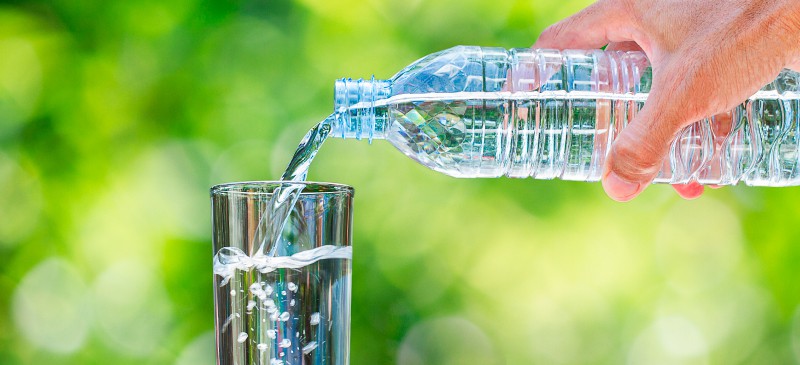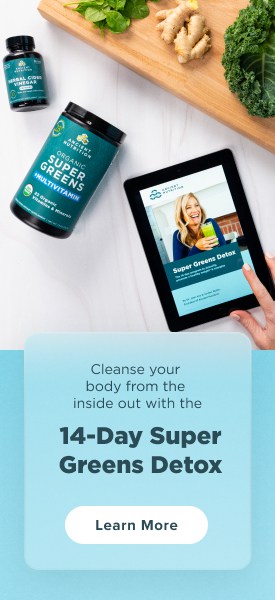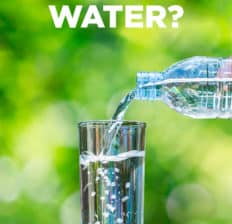This Dr. Axe content is medically reviewed or fact checked to ensure factually accurate information.
With strict editorial sourcing guidelines, we only link to academic research institutions, reputable media sites and, when research is available, medically peer-reviewed studies. Note that the numbers in parentheses (1, 2, etc.) are clickable links to these studies.
The information in our articles is NOT intended to replace a one-on-one relationship with a qualified health care professional and is not intended as medical advice.
This article is based on scientific evidence, written by experts and fact checked by our trained editorial staff. Note that the numbers in parentheses (1, 2, etc.) are clickable links to medically peer-reviewed studies.
Our team includes licensed nutritionists and dietitians, certified health education specialists, as well as certified strength and conditioning specialists, personal trainers and corrective exercise specialists. Our team aims to be not only thorough with its research, but also objective and unbiased.
The information in our articles is NOT intended to replace a one-on-one relationship with a qualified health care professional and is not intended as medical advice.
Can You Drink Distilled Water? Side Effects, Uses + How to Make
August 11, 2021

Today there are lots of different water options available to us — including raw water, alkaline water, bottled water and good old-fashioned tap water straight from your kitchen faucet. Distilled water is the type that’s most commonly recommended for people who are very sensitive to contaminants in their water, including infants or those with compromised immune systems.
That’s because it’s free of contaminants and metals, such as chlorine. Research suggests that the distillation process removes up to 99.9 percent of these unwanted particles.
Is drinking distilled water good for you? As explained more below, there are both pros and cons to making this your water of choice — for example, it’s highly purified but also lacks beneficial minerals you’d normally find it spring and tap water.
What Is Distilled Water?
Distilled water is a type of purified water that meets specific classification requirements for having very low levels of contaminants. Technically, it must have less than 10 parts per million of total dissolved solids or contaminants.
Examples of contaminants you may find in water that distilling helps remove include:
- bleach
- salts
- pesticides
- metals like copper and lead
- toxins produced by bacteria
- even some residual medications/drugs
Is boiled water the same as distilled water? Not exactly.
Distilled water is made by heating tap water and capturing the vapors once they condense. This is why another way to describe distilled water is purified condensed liquid.
Related: Can You Eat Snow? Whether It’s Safe, Plus Pros + Cons
Can You Drink It?
There are lots of benefits of drinking water, so do these apply to distilled water as well?
You can certainly drink distilled water, and this is a good idea for people who require very pure water, such as those with cancer or serious viruses and infections.
While you can drink distilled water, some experts recommend against making it your primary type of drinking water because it lacks minerals.
If you do drink it often, it’s recommended that you make sure to load up on minerals in other ways, such as by eating foods rich in calcium and magnesium and by taking fluoride supplements. (This is often recommended for babies and children who don’t get enough fluoride from drinking water alone.)
However, because it’s a very clean type of water, it’s a good choice for people who need to be extra careful to avoid consuming contaminants, along with those living in areas where water purity is an issue.
Side Effects (Pros & Cons)
Pros:
What is distilled water potentially good for? Here are some of the benefits of drinking and using this water:
- Good choice for people with reduced immunity, such as those with cancer or HIV/AIDS.
- Can be mixed with infant formula to help ensure infants get clean water.
- Free of contaminants and additives, including metals, chlorine and pesticides that can be lurking in some tap water.
Cons:
Why shouldn’t you drink distilled water, according to those who warn against it?
- Doesn’t contain any natural minerals. During the distillation process this type of water winds up lacking nutrients found in un-distilled water, such as calcium, magnesium and fluoride. Basically, the distilling process does not differentiate between “bad” compounds and good ones found in water. So while harmful contaminants are removed, so are the trace minerals that our bodies need to perform properly.
- Prone to picking up minerals from anything it touches. One potential issue is that distilled water needs to be stored carefully so it doesn’t pick up chemicals from the container it’s in. It’s best to store it in glass or high-quality stainless steel, rather than plastic bottles or jugs.
- Doesn’t taste like regular tap or bottled water. Because it lacks minerals, some people find that it tastes weird or unpleasant.
- It can also be expensive to buy or time-consuming to make on a regular basis at home. Plus it can waste a lot of water, since you need quite a bit of tap water just to make a small amount of distilled water.
Distilled Water vs. Purified Water
Purified water is a bit different than distilled water because it has had chemicals and contaminants removed but may still contain some minerals (such as calcium, magnesium and fluoride) that distilled water lacks.
Purified water goes through a filtering process that removes contaminants, including chemical pollutants, bacteria, fungi and algae. You can make it at home — plus it’s available as bottled water in grocery stores, although not all bottled water is necessarily very purified.
What about other types of water?
Similar to purified water is “filtered water.” This is water that passes through a filter that uses carbon and micron filters to remove chemicals, metals (like lead and copper commonly found in tap water) and potentially pesticides.
Some people also find that filtered and purified water “taste better” and lack any odors, although this is up to personal preference.
There’s also “reverse osmosis water.” This is water that is filtered using a semi-permeable membrane and carbon that remove contaminants and salt.
Some cities use reverse osmosis when there’s an abundance of saltwater but not enough fresh water. These type of filters are also used on camping sites and in some people’s homes.
Uses
Distilled water has a number of household and health-related uses, including in:
- Infant formula (the lack of minerals isn’t an issue in this case because baby formula contains minerals)
- Medical facilities and labs where purity is very important
- Home aquariums
- Humidifiers and CPAP machines
- Car maintenance
- Watering plants
How to Make It
How do you make distilled water at home? It’s not difficult to do, but it does require some time and patience.
Basically you boil water and capture the steam in a pot.
Here are instructions for making distilled water using basic kitchen equipment:
You need one large pot, a lid for the large pot, a small pot, water, ice and oven mitts. The process involves using tap water to create water vapor, then collecting the condensation with the aid of ice.
- Start with 8 cups of water in the large pot. This recipe will yield about 1.25 cups of distilled water.
- Place the large pot over a stovetop burner ,and add the water. Then, place the smaller pot inside the large pot so it’s floating on top of the water.
- Turn on the stove burner to medium-high heat, but avoid boiling the water too much. Aim to keep the water at a low simmer.
- Place the lid upside-down on the large pot, which helps the distilled water to trickle down to the middle of the lid and into the smaller pot.
- Place ice on top of the inverted lid, which speeds up the condensation process.
- Replenish the ice after a half-hour and then again 15 minutes later. Use oven mitts when handling the lid and pots to protect your hands.
- Whatever water flows into the smaller pot is now distilled.
- Remember that the water can draw minerals from whatever it touches, such as plastic, so it needs to be stored carefully in glass or steel.
Conclusion
- Distilled water is made through the process of distillation. It’s basically captured water vapors that are purified and free of chemicals, metals and contaminants.
- Can you drink distilled water? Yes, although it might not be the best idea to make it your primary type of water since it can be expensive, time-consuming to make and lacks some beneficial minerals that are naturally found in spring and tap water. It can also draw minerals from whatever it touches, such as plastic, so it needs to be stored carefully in glass or steel.
- This type of water is best for people with compromised immune systems who need to carefully avoid metals, microbes, etc.
- Purified water is a bit different than distilled water because it has chemicals and contaminants removed but may still contain some minerals (such as calcium, magnesium and fluoride) that distilled water lacks.














